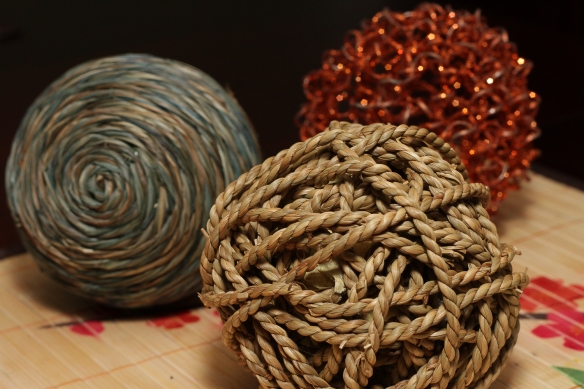Hello LCC members,
Today I will talk a bit about aperture (f-stop) AV
This little number that can range between f1.2 – f64 depends on your lens. If you look at your lens it will have this number on the lens as either a fixed value for prime lenses or a variable value for zoom lenses i.e. 3.5 – 6.3 . This number indicates how wide open the aperture can be set.
Remember with aperture the lower the number more light enters the lens the higher the number less light enters the lens. So f1.2 is more light and f22 is less light.
Put most simply – Aperture is ‘the opening in the lens. Moving from one f-stop to the next doubles or halves the size of the amount of opening in your lens (and the amount of light getting through).
Now don’t confuse this with shutter speed we will discuss that in another post as well as the exposure triangle.
Here are some photo examples in which I used a 50mm f1.8 prime lens and my focus was set on the ball of string in the front. The only change I made was to the aperture setting.

This photo is shot at f4 notice how less of the background is blurred and more of the scene is coming into view.

This is shot at f22 which for this lens is the max. Notice that all the items are in clear view from front to back of the image.
Learning how to use the aperture setting is a great way to pull the viewers focus to what you want them to look at. For instance in a portrait a low aperture setting between f1.8 or f8 would be a good choice. In a landscape it would be f16 or f22 as you would want to show the entire landscape.
This week take some photos and just change the aperture setting get out of program mode and take control of your image making. If you do not know how to change the setting this would be a good time to find that camera manual.




Thanks, Steve! Seeing the pictures at the different f-stops is really helpful!
LikeLike
Your welcome!
LikeLike
Your posts are terrific! Thanks so much for taking the time to put them up. This one especially makes fstop suddenly understandable.
LikeLike
Thank you!
I am happy the explanation was helpful, shortly I will do a post on shutter speed.
LikeLike
Pingback: ISO what is it? | Lighthouse Camera Club
Pingback: Exposure Triangle | Lighthouse Camera Club
Pingback: Learning & Creativity | Lighthouse Camera Club
Pingback: Camera Modes For Beginners-Shutter Priority and Aperture Priority | Lighthouse Camera Club
Pingback: Say Yes! | Photography by Steve daPonte
Pingback: Aperture Priority | Photography by Steve daPonte
Pingback: Last Nights Learning Session | Lighthouse Camera Club